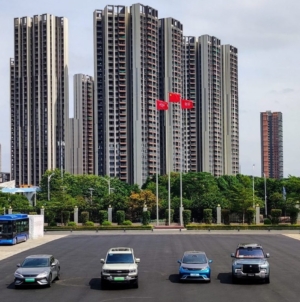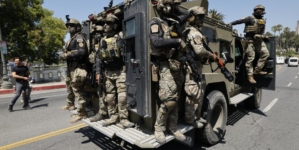-
Full List of Biden Associates Pleading Fifth Amendment in GOP Investigation - 15 mins ago
-
NFLPA Executive Director Lloyd Howell Resigns, Citing ‘Distraction’ - 22 mins ago
-
Kristi Noem announces new TSA security lane for families and military members - 51 mins ago
-
Mom Given Option To Terminate at 20 Weeks, Unprepared for What Happens Next - 58 mins ago
-
Attacks by Israeli settlers on Palestinian Christians surge - about 1 hour ago
-
Siegel Back On Track, DeFrancesco Back At Home: What To Know For INDYCAR At Toronto - about 1 hour ago
-
What to do if you get a suspicious bank text claiming to be from Chase - about 1 hour ago
-
Cookie Recall as ‘Serious’ Health Warning Issued - 2 hours ago
-
Chargers WR, Former Top-10 NFL Draft Pick Mike Williams Retiring at Age 30 - 2 hours ago
-
Chargers WR, Former Top-10 NFL Draft Pick Mike Williams Retiring at Age 30 - 2 hours ago
Time to ban homes in Rancho Palos Verdes’ landslide zone?
After almost two years of unprecedented landslide movement that has upended life across much of the picturesque Portuguese Bend area of the Palos Verdes Peninsula, officials want to permanently ban new construction in the landslide zone.
The proposed ordinance, which has drawn backlash from some property owners, would prohibit construction of new homes or additions in the area — even on vacant lots, of which many remain. However, it would permit repairs, restoration efforts or even the replacement of existing homes within a residence’s established footprint. The measure will be considered next month by the Rancho Palos Verdes City Council.
“This is not an area that should accommodate new residences,” said City Manager Ara Mihranian. “We are at a point where we have seen such severe damage. … I’ve got to give recommendations that have public safety and public interest in mind.”
The proposed ban comes as city officials struggle to respond to the major increase in land movement that began in late 2023 and peaked last summer, when some areas recorded up to a foot a week of movement. While the movement has slowed considerably, or even stopped in some areas, several spots are continuing to see 3 to 4 inches of sliding a week, according to the city’s latest records.
Though the area has long been known for recurring issues from a complex of ancient landslides that reemerged in the 1950s, the damage over the last two years has occurred at a scale and rate never before seen. Homes fractured, roads became warped beyond use and area utilities shut off electricity and gas services to much of the region after repeated damage, though some sections have since been restored.
As of this month, the city has designated 20 homes too dangerous to enter and another 38 as having significant structural damage — enough to make parts of homes uninhabitable. At the end of last year, the federal government agreed to finance a buyout program for about 20 homes, to convert the properties into open space and limit future risk in the area.
“This is a natural disaster and it’s all associated with water — rainwater — and I don’t know what winter is going to look like; I don’t know what next year is going to look like,” Mihranian said. “We don’t know what’s in store, so we’re taking a prudent and cautious approach.”
The proposed ordinance would affect approximately 400 homes and 132 privately owned lots across roughly 2 square miles, including all of the Portuguese Bend neighborhood, and western sections of the Seaview and Portuguese Bend Beach Club neighborhoods. All three areas saw major damage over the last two years.
If the ordinance passes, it would make permanent an emergency moratorium on new construction that city officials enacted in October 2023. It would also strengthen a prior development ban that had been in effect since the late 1970s, but had many exceptions that carved out avenues for several new homes to be built in the last few decades, some of which won approval through lawsuits.
Mihranian said some of those property owners who successfully sued to build homes in the early 2000s ended up suffering the worst fates in the recent landslide movement. Several of the homes were recently “structurally red-tagged,” Mihranian said, meaning the city found them unsafe and unlivable. And at least five recently applied for federal buyouts due to severe damage, according to Brandy Forbes, the city’s director of community development.
Albuja looks over significant landslide damage at the intersection of Dauntless and Exultant drives, close to where she lives in Rancho Palos Verdes.
(Allen J. Schaben / Los Angeles Times)
“All along, the city’s position has been [that] new construction, bringing in that level of development, was not prudent for an area known to be actively moving,” Mihranian said. “The behavior of the landslide fluctuates and it depends on weather and rain. We have always said it’s not safe. … The information that’s in the record … speaks for itself.”
While an appellate court in 2008 found that the property owners had a right to build on their land and downplayed the landslide threat, Mihranian said the risks are much clearer now. Not only did the movement accelerate dramatically in the last two years — partly due to the activation of a new, deeper slip plane and back-to-back winters with above-average rainfall — sliding also affected areas that historically had never experienced damage.
“Today is very different,” Mihranian said. “What we saw in 2024 was a significant change in the behavior of the landslide.”
But he’s also aware it’s an emotional and complicated issue for residents and property owners. Many remain hopeful the movement will continue to slow or subside, or they believe there’s a way to implement reliable landslide mitigation measures, either of which could allow for normal life, and construction, to resume. It’s particularly frustrating for owners of vacant lots with coveted ocean views — properties that would typically sell for top dollar.
At a community meeting Wednesday night, several residents voiced worry that the blanket ban could further depress property values — even for residents just outside the slide zone. Some questioned the fairness of allowing major repairs to existing homes, but banning new construction. A few questioned why the whole region would be lumped together when many sections have seen movement stop in recent months.
Nikki Noushkam, a resident whose home saw some damage during the height of the movement but has recently seen things stabilize, worried about how the plan makes this ordinance indefinite and would be applied indiscriminately to any area that has seen movement, no matter the latest data on stability.
“To me this just doesn’t make sense to basically come and say, ‘This is forever and ever,’” she said Wednesday night. “Why are you applying a blanket policy on all of this? It just doesn’t make sense to me.”
While the proposed ordinance wouldn’t include a timeline to reassess it, city officials said it could be amended in the future if circumstances change drastically.
“We’re going to continue to review it as time goes on,” Mayor David Bradley said. “We’re trying to come up with the best solution. A lot of this is about public safety and trying to make people’s houses and their properties safe.”
Other neighbors were more supportive of the idea, and appreciated a cautious approach given the extent of the recent damage.
“It’s too raw right now to be building on what’s been damaged for the last two years,” said Eva Albuja, another resident who experienced damage. She worries that without further mitigation and a pause in construction — which some think can exacerbate the landslides by altering the landscape — the extent of the movement could expand even further.
Gordon Leon said he agrees that new development on the area’s unstable ground probably isn’t the smartest — or safest — investment, but he’s glad repairs and restoration will continue to be allowed. As a longtime resident, he’s committed to figuring out a way to stay in the area, even if it means making modifications that “landslide-proof” his home, such as transferring it from a stagnant foundation and onto more flexible steel cribbing.
“We’ve looked around for other areas that we could have the same sort of community and space, [but] it’s not in Southern California,” Leon said. “This is an incredibly special community where people have lived together a long time.”
Source link


























